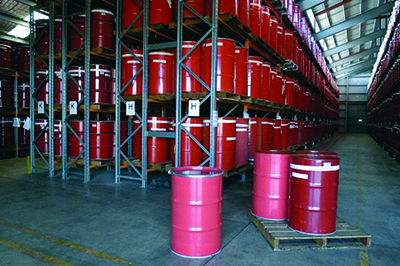Radioactive waste results from a variety of practices in medicine, industry and research that are carried out in Australia. The radioactive substances in the waste may be of natural origin or be artificially generated. The material is considered radioactive from the regulatory perspective because of its content or concentration of radioactive substances. It is considered waste because no further use for the material is foreseen. Although storage of some forms of radioactive waste is often necessary, disposal is the recognised end point for long-term safety.

Key Definitions |
||
|
Radioactive waste: Material with a content or concentration of radioactive substances over a certain predefined level for which no further use is foreseen. |
Storage: The retention of radioactive waste in a facility or a location with the intention of retrieving the waste for conditioning (if needed) and ultimate disposal. The period of storage may vary depending on the waste and the type of facility. Storage is, however, always an interim measure. |
Disposal: The emplacement of radioactive waste into a facility or a location with no intention of retrieving the waste. Disposal options are designed to contain and isolate the waste from the accessible environment by means of engineered and natural barriers in a manner that is commensurate with the hazard. |
Australia has established a national system for classifying radioactive waste. The classification scheme is described in the ARPANSA Radiation Protection Series (RPS) publication Guide for Classification of Radioactive Waste (RPS G-4). It reflects the international classification scheme developed by the International Atomic Energy Agency and published as General Safety Guide No. GSG-1, Classification of Radioactive Waste.


Images of radioactive waste: Examples of waste stored at the Australian Nuclear Science and Technology Organisation (ANSTO). Left, low level waste in 200 litre drums; right, storage of intermediate level waste in a TN 81 cask (height 6.5 metres).
The most important factor that determines the classification of the waste is the manner by which it can be safely disposed. This depends on the amounts and concentrations of radioactive substances, their properties including their half-lives (the time it takes for the activity to decay to half its original level), and other properties such as heat generation.
At one end of the spectrum is waste that can be exempted from regulatory control; at the other end is waste with very high activity levels that also generates significant amounts of heat from decay of radioactive substances in the waste.

Australia’s Radioactive Waste Classification Scheme (RPS 20) |
| Exempt waste (EW): Waste that meets the criteria for exemption from regulatory control for radiation protection purposes. |
| Very short lived waste (VSLW): Waste that can be stored for decay over a limited period of up to a few years and subsequently exempted from regulatory control according to arrangements approved by the relevant regulatory authority, for uncontrolled disposal, use or discharge. This class includes waste containing primarily radionuclides with very short half-lives often used for industrial, medical and research purposes. |
| Very low level waste (VLLW): Waste that does not meet the criteria of EW, but does need a moderate level of containment and isolation and therefore is suitable for disposal in a near-surface, industrial or commercial, landfill type facility with limited regulatory control. Such landfill type facilities may also contain other hazardous waste. Typical waste in this class includes soil and rubble with low activity concentration levels. Concentrations of longer-lived radionuclides in VLLW are generally very limited. |
| Low level waste (LLW): Waste that is above exemption levels, but with limited amounts of long lived radioactive substances. Such waste requires robust isolation and containment for periods of up to a few hundred years and is suitable for disposal in engineered near-surface facilities. This class covers a very broad range of waste. Low level waste may include short lived radionuclides at higher activity concentration levels and long lived radionuclides, but only at relatively low activity concentration. |
| Intermediate level waste (ILW): Waste that, because of its content, particularly of long lived radionuclides, requires a greater degree of containment and isolation than that provided by near-surface disposal. However, ILW needs little or no provision for heat dissipation during its storage and disposal. Intermediate level waste may contain long lived radioactive substances, which will not decay to an activity concentration acceptable for near-surface disposal during the time for which institutional controls can be relied upon. Therefore waste in this class requires disposal at greater depths, in the order of tens of metres to a few hundred metres. |
| High level waste (HLW): Waste with activity concentration levels high enough to generate significant quantities of heat by the radioactive decay process or waste with large amounts of long lived radionuclides that need to be considered in the design of a disposal facility for such waste. Disposal in deep, stable geological formations usually several hundred metres or more below the surface is the generally recognised option for disposal of HLW. |
Waste intended for disposal must be well characterised in terms of content of radioactive substances and its chemical and physical properties. It must be properly conditioned as part of the predisposal management of the waste to comply with waste acceptance criteria that determine whether the waste is suited for the disposal facility. Waste that is poorly characterised or showing signs of degradation will have to be re-characterised and reconditioned. This may happen with legacy waste from abandoned activities or facilities where the waste has been collected and stored for the purpose of protecting people and the environment from radiation risks but without any specific disposal solution in mind.
It is important to bear in mind that facilities for storage and disposal do not operate in isolation. The system for managing radioactive waste may also include facilities for conditioning of the waste, for example, and it may be necessary to transport the waste between different predisposal management facilities.


